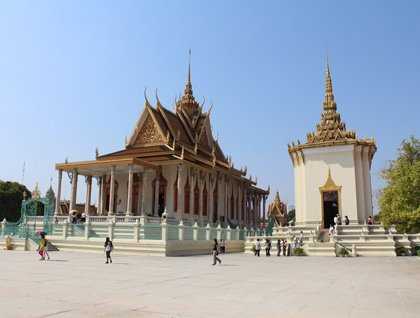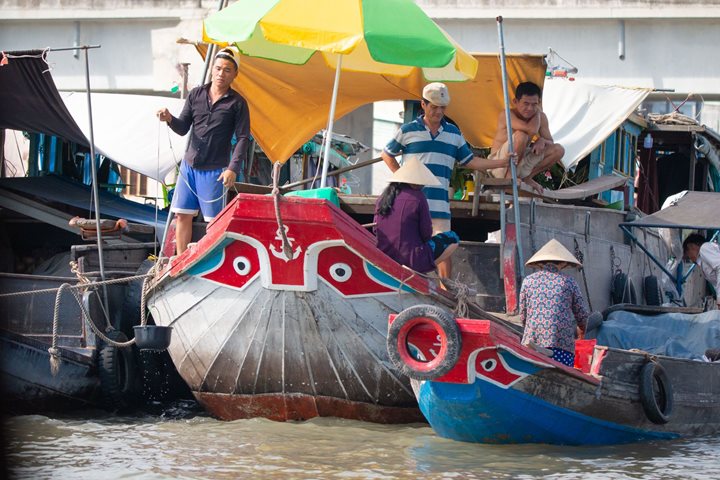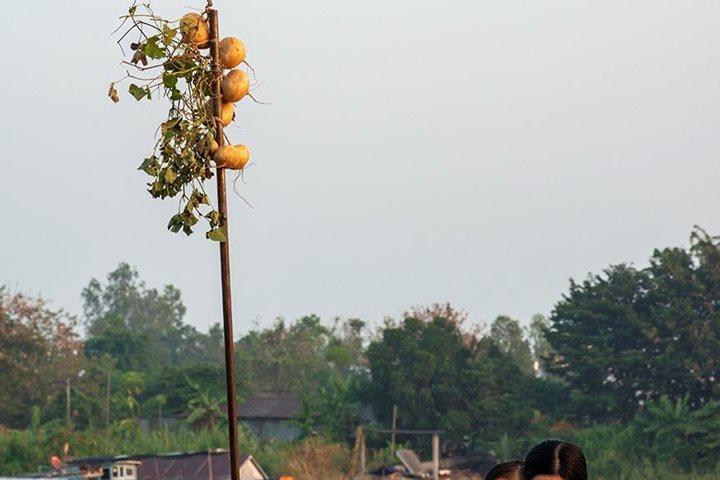Our expedition to the Cambodian capital was a day full of new experiences, which is somewhat fitting, because “Penh” translates as “full” in Khmer. It was also a time for personal reflection as we visited places which represent the country’s turbulent past.
The day began bright and early as the Jahan finished its approach down the Tonle Sap, arriving at Phnom Penh while bathed in the light of yet another glorious sunrise. After a session of Tai Chi and a hearty breakfast, we disembarked around 8:00 a.m. for a tour of the city by “cyclo.” These reverse-tricycle pedal-powered rickshaws provided an elegant introduction to the bustling streets of the Cambodian capital, taking us past the French colonial architecture of the municipal post office, the stupa of the eponymous Wat Phnom, the “New Khmer” style of the Central Market, and along the riverside towards the Royal Palace. Our journey, both relaxing and exciting at the same time, repeatedly demonstrated the improvised negotiation that every intersection of traffic involves.
The Royal Palace, built in the mid 19th century during the French colonial era, gave us a taste of the splendour of the Cambodian court, with some of the finest monuments, regalia, and gardens the kingdom has to offer. We saw the Polish lead team in the process of restoring the beautiful frieze paintings around the peristyle, before removing our hats and shoes to enter the Silver Pagoda, a monument which houses a multitude of finely crafted images of the Buddha.
The next stop on our itinerary took us to the National Museum, located just to the north of the palace grounds. Here we were able to appreciate some of the finest artwork from more than two thousand years of Khmer civilization. Unfortunately the museum does not permit any photography of the artefacts on display, but the building itself and the fine gardens in the central courtyard were fair game.
After a delicious lunch at Topaz, a restaurant offering French-Asian cuisine, our guides took us to the Tuol Sleng genocide museum. Also known as S-21, this former high school was a prison run by the Khmer Rouge during their “cultural revolution.” Tuol Sleng was then followed by a trip out to Cheung Ek, just one of the several hundred known killing fields. Today these places remain a sobering monument to the frightening extremes of the human condition.
Our day ended on a more cheerful note however, as we were treated to a live apsara dance aboard the Jahan. The skill, dexterity and control the dancers demonstrate were a feast for the eyes. The splendid, the shocking and the beautiful, Phnom Penh is truly a city of contrasts.







